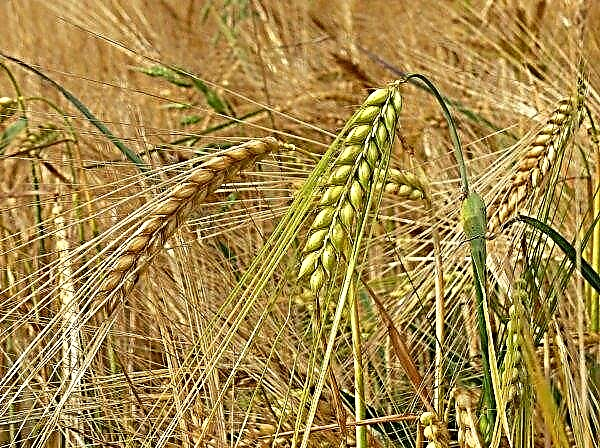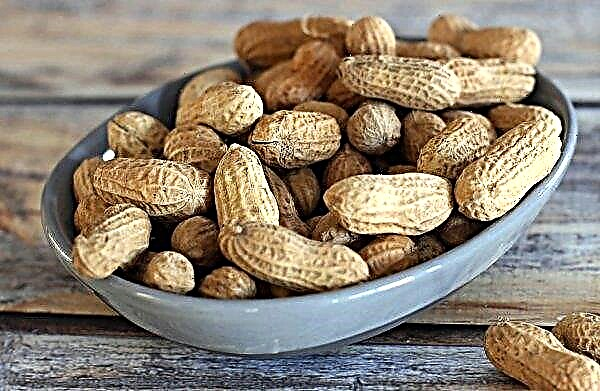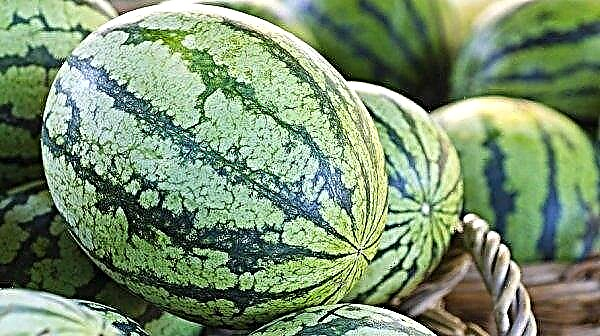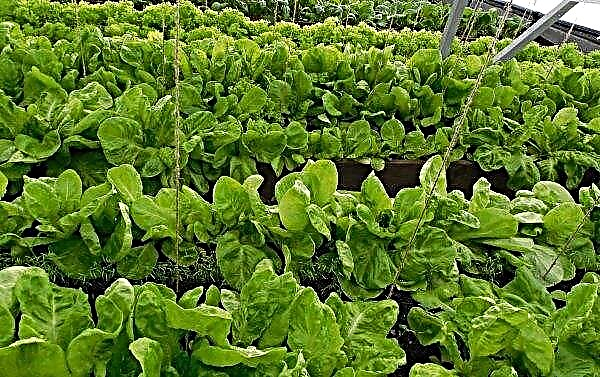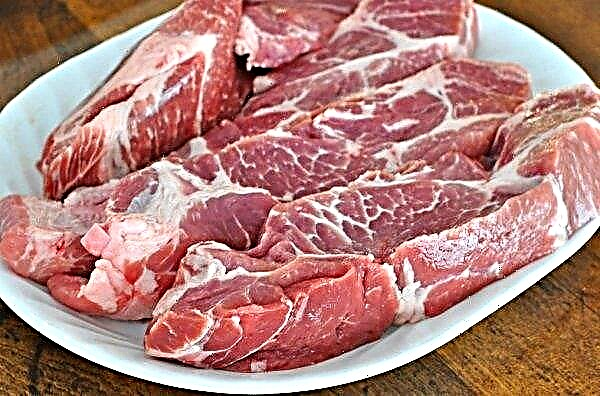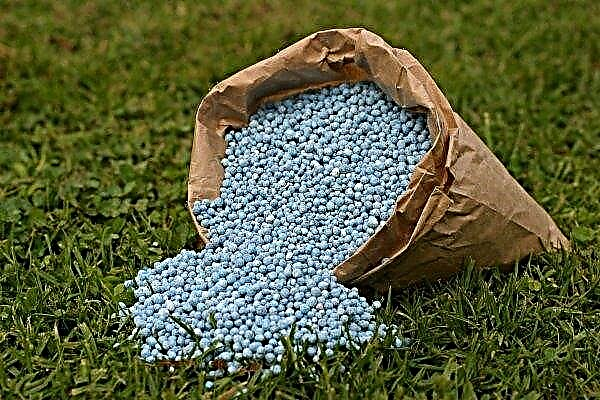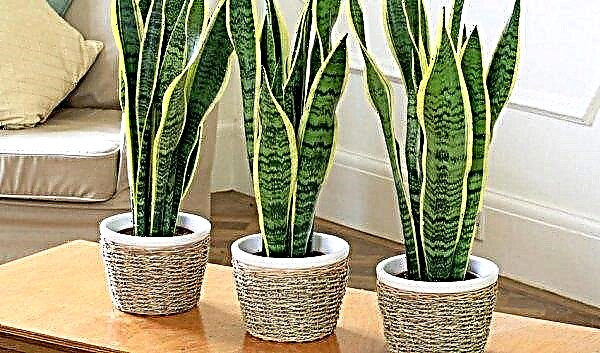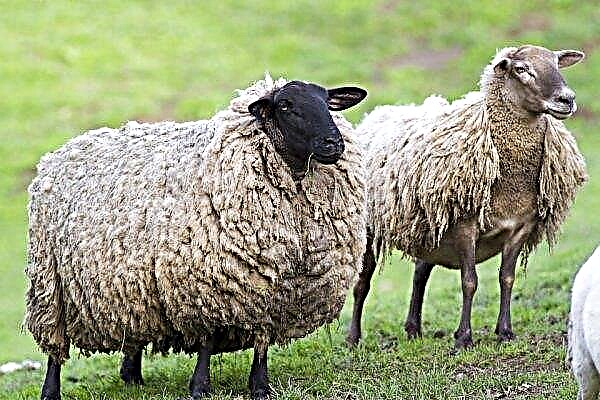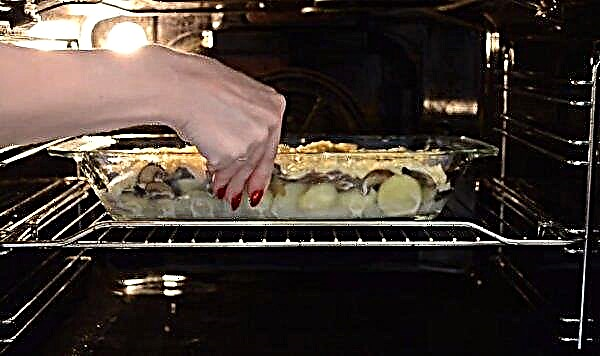Ginger conquered many housewives with a fragrant taste and versatility in use. The root of this plant is widely used in cooking, medicine and other areas of human activity. However, few people thought that fragrant root tubers can be grown in their own home, turning an exotic plant into a houseplant. The article discusses how to grow ginger on the windowsill, as well as what needs to be done to turn the spice into a decorative flower.
The choice of varieties for growing at home
Ginger is a perennial herb growing in warm equatorial and subequatorial zones. In the natural environment, the hottest regions of India are considered the best place for this, where the species is still found in wild form to this day. Today, a huge number of plant varieties is known, so choosing the best hybrid for planting is a troublesome business. The choice depends on what purpose you are going to plant the plant: for eating or for decorating the interior.

Conventionally, all varieties of ginger are divided into the following varieties:
- Burning - They are distinguished by a particularly rich taste and spicy aroma, for example, the variety Black (Barbados). In addition to increased aromatic properties, the plant has a soft peel on the root, so it does not need serious cooking.
- Soft - have a pleasant and mild taste. Among these hybrids, the Bengali (White) variety is considered the most popular. It has a fairly dense skin, so it is difficult to clean.
- Decorative - quickly grow and develop, while the growth rate of rhizomes in such hybrids is greatly slowed down. The most prominent representatives of the group are considered to be the varieties Zerumbet, Ginger Torch, Wonderful, Kasummunar, Purple and Japanese.
Important! If you are not able to decide on a hybrid for planting, you can use a simple but effective method of selecting varieties. Evaluate root vegetables for taste - the variety that you like best can be selected for germination.
Rules for planting ginger from the root of the house in a pot
In order to successfully grow this plant at home, you should properly plant a seedling. Despite the fact that ginger is a specific culture, its planting is practically no different from the propagation of any tuberous or bulbous culture. To do this, you just need to properly prepare the soil and seedlings.

How to germinate ginger from the root tubers?
Ginger can propagate in two ways: fruits or parts of a bush.
In the first case, a genetic exchange occurs between two daughter plants, due to which a new instance grows with an exclusive set of genes. In this case, the plant does not lose varietal characteristics.
Propagation by parts of the bush - the so-called vegetative method of forming new plants. In this case, a young sprout can be obtained by germinating leaves, stem processes and root tubers. This makes it possible to instantly propagate the species and obtain genetically identical copies.
In the case of root root germination, fleshy, dense and elastic parts of the root are selected for this, not subject to rot and damage. A new plant is formed from root buds, so they must be whole and have a slight pinkish tinge. Clean tubers should be placed on a well-moistened substrate in a deep container. The substrate may be sphagnum moss or other interchangeable material.
Germination is carried out at a temperature of +22 ... + 26 ° С, For this, the capacity is placed near the battery, in the most illuminated part of the house. Observing the level of increased humidity of the substrate, in about 14 days, under such conditions, the rhizome will give several young shoots that can be successfully dived into a more useful substrate - nutrient soil.
Video: Ginger tubers sprouting
Preparing the root for planting
Germination of any kind of ginger should be preceded by the procedure for preparing planting material. Only with its help it is possible to avoid rotting of planting material in the thickness of the soil, as well as the death of young shoots. The first thing to do is to divide the sprouted rhizome into several parts. They do this in such a way that no more than 1 sprout appears on one fragment, otherwise a dense bush will form instead of an elegant plant. At the next stage, seedlings for 1-4 hours should be soaked in special chemical protection products. The Fitosporin solution (1 teaspoon per 200 ml of water) is suitable for this; in its absence, 1% potassium permanganate can be used. After soaking, the planting material is dried in a warm, but protected from direct sunlight.
At the next stage, seedlings for 1-4 hours should be soaked in special chemical protection products. The Fitosporin solution (1 teaspoon per 200 ml of water) is suitable for this; in its absence, 1% potassium permanganate can be used. After soaking, the planting material is dried in a warm, but protected from direct sunlight.
Choosing a place to grow
Specific conditions are necessary for the quick and safe rooting of ginger seedlings. This plant is one of the brightest representatives of a warm climate, with a narrow range of annual temperature changes. To achieve this, the plant is placed on the warmest and most lighted window silllocated in the western or eastern side.
However delicate leaves of ginger do not tolerate direct sunlight. To prevent leaf burns, the plant is provided with diffused light, and during periods of summer drought it is completely protected from the sun. The view is also sensitive to drafts, sudden changes in temperature are contraindicated for it. The growing place should be provided with regular air circulation, otherwise this will lead to weak immunity.
In what soil to plant, the choice of capacity
The view is not demanding on the capacity for planting; almost any flower pot is suitable for this: from plastic, glass, ceramics, metal or wood. You should carefully approach the choice of pot sizes. To plant the spice, shallow containers should be selected, with a diameter of at least 15 cm. This will lead to the active growth of the rhizome and increase the final productivity of the plantings.

As a filler, the pots should be filled with loose and well-fertilized soil.. Almost any purchased substrate based on peat or humus is suitable for this. You can cook it yourself: for this it is necessary to mix peat, clay and garden soil in equal parts. To improve nutrition and protect seedlings from infections, such soils are enriched with crushed wood ash (100 g per 1 kg of soil).
Important! Ginger planting is best done from early December to mid-February. This will make it possible in the spring to get a full-fledged plant, ready for active growth and development.
Rhizome planting
Ginger planting is carried out as follows:
- Fill the garden pot with 2/3 soil and water it well.
- Put in the center of the container a pre-prepared root fragment, with the sprout pointing up. If you plant ginger in a common wide container with several seedlings, the distance between them should be maintained at least 20 cm.
- Loosely wrap the rhizome with a 1–2 cm soil layer and lightly tamp the substrate.
- Moisten the substrate well, and then wrap the container with a clear plastic wrap.
- Move the container to a well-lit and warm place (at least + 20 ° C).
- After the seedling sprouts, the polyethylene is removed, and the young sprouts are transferred to adult care.
Video: Planting Ginger Root
Seedlings
Cultural varieties are considered slowly growing species, which is their characteristic feature. You should not expect the first seedlings within a week after planting seedlings. With strict observance of all the subtleties of growing a crop, home-made ginger will rise no earlier than 2-3 weeks after planting. But, if the tubers were not subjected to preliminary germination, the first sprouts from the soil can appear only after 2 months. In this case, all conditions of heat, lighting and soil moisture must be observed.

How does ginger bloom?
Active flowering of ginger is often observed no earlier than 2-3 years after planting. Approximately in the spring-summer period of the year, thin and elongated pseudostems painted in a saturated pink shade begin to form on the plant.
Important! DFor growing ginger, both specialized planting material from flower shops and tubers from simple supermarkets are suitable. The botanical characteristics of the plant in both cases will be preserved perfectly.
On these formations small flowers of pink, red, purple or yellow shades grow. They gather in large pineal inflorescences, but sometimes ginger is covered with separate large double or lily-shaped flowers.

Features of growing and care at room conditions
Sprouting ginger root is not enough. In order for the plant to produce a large fleshy root root and a rich green aboveground mass, it should be provided with appropriate conditions. First of all, the view needs a special microclimate, as well as daily attention. Care for the plant should be daily, only in this case it can not only grow, but also acquire the necessary immunity.
Lighting and temperature
They contain the culture at a constant temperature, it must necessarily exceed + 10 ° C, otherwise the plant will begin to die gradually. To avoid this, it is enough to observe a temperature in the range of +22 ... + 30 ° С.
 The culture grows well with an abundance of light, but the easy shading for it is also not scary. Ideally, the light should be intense, but scattered so that direct sunlight does not fall on the green mass
The culture grows well with an abundance of light, but the easy shading for it is also not scary. Ideally, the light should be intense, but scattered so that direct sunlight does not fall on the green mass
Air humidity
In the natural environment, ginger grows and develops in a humid climate, so if you want to get a healthy plant, it daily spray from the garden spray. In this case, the liquid is used exclusively standing up and warmed to room temperature, otherwise this will lead to hypothermia and a decrease in immunity.
Watering, top dressing, cultivation
From mid-spring to early winter, ginger needs moderate watering, while the soil should always be slightly moist. Sharp jumps in moisture for the substrate are unacceptable, since they will provoke a decrease in plant immunity. In spring and summer, the soil is moistened 2-3 times a week, in winter the culture hibernatestherefore, after withering of the aerial mass, watering is halved.
Did you know? Ginger was first discovered about 5 thousand years ago in ancient India. Due to the unusual shape, the locals called the plant “horned root”.
Periodic loosening of the soil successfully affects the growth of ginger. This procedure helps to saturate the soil with oxygen, necessary for the development of the root system. Loosening is carried out with a frequency of 1 time in 7-10 days. They must do this at least 24 hours after watering, otherwise the soil will lose valuable moisture.
Since culture is demanding on nutrients in the substrate, after planting, the plant will need regular feeding. They begin about 2 weeks after the appearance of the first seedlings, and then they are carried out from March to October, with a frequency of 1 time in 14-20 days. This species reacts better to organic top dressing, so any organic mixture for indoor plants is used. Alternatively, you can use a solution of cow dung (1:10). To ensure an increased concentration of nutrients in the rhizome, from August organic fertilizers are replaced with any mineral solution based on potassium.

Harvesting
To fully form, ginger root tubers need at least 6–8 months. Therefore, often harvesting roots is carried out from September to early November. Harvested in September, it has a milder taste, which is ideal for any meal and drink.. If the crop of the plant is to be used for medical purposes in the future, it is better to collect the crops as late as possible, this will help the rhizome to accumulate an increased amount of valuable substances.
Harvest as follows:
- Cut off the entire aerial mass of the plant.
- Carefully remove the root system from the soil.
- Peel the residual soil under running water and dry thoroughly.

How to grow ginger at home on the windowsill for flowering?
Often, ginger is grown for decorative purposes, such a flower can be used as an ideal addition to the interior. In addition, its elegant flowers have no less attractive properties than the more adapted species for this, and are able to please with a rich aroma. At the same time, you can successfully grow such a flower in an ordinary apartment for many years.
Pot for stimulating ground shoots
To grow ginger for decorative purposes, choose as narrow pots as possible, with a depth and diameter of not more than 15 cm. The conditions of artificial crowding inhibit the development of rhizomes, which makes it possible to let all the nutrients absorbed from the soil into the growth of the aerial mass. Thanks to this, it is possible to form a saturated green bush, which, under appropriate conditions, will please with abundant flowering.

What conditions should be created during the “hibernation” period?
So that after a seasonal rest the plant instantly activates, grows and blooms, it is necessary to create special conditions for the rest period. As soon as the aboveground mass turns yellow and begins to dry out, it must be carefully trimmed and disposed of. Thereafter it is necessary to sharply reduce the intensity of soil irrigation, while the substrate should always be slightly moist and not dry.
Ginger also needs to create conditions for artificial wintering, for this, the container with the plant is placed in a cool place with a temperature of +5 ... + 15 ° С. Wherein the intensity of lighting does not play a role for a safe wintering, so the flowerpot can be successfully moved to the cellar or unlit closet. Feeding is also useless for ginger during this period, therefore, after the first signs of yellowing of the leaves and the stem of the feeding, the feeding is stopped.
Did you know? According to one theory, ginger appeared in Europe in the 13th century, thanks to the legendary Italian traveler and merchant Marco Polo.
How to protect ginger from diseases and pests?
Ginger is characterized by increased resistance to diseases, therefore, even when grown in an open substrate, the species is practically not affected by infections and pests. But, so that the quality of the plants does not decrease, they should be treated with special means. The best method of protecting plants from fungi is considered to be spraying with Fitosporin, alternatively, the drug can be replaced with 1% potassium permanganate. Do such procedures periodically, every 2-4 weeks.

Of the pests, the culture is most often affected by a spider mite.. For the control of insects use any contact insecticide. However, if in the future you plan to use the root of the bush in economic activities, it is better to replace chemicals with folk remedies. The most effective of them is considered a soap solution, which is periodically sprayed with the aerial mass of the plant.

Ginger in a home pot is not exotic at all, but a very real roomman. Despite the exotic, growing this plant in an ordinary apartment is not difficult. To do this, prepare the root tubers for planting, observe the requirements of the culture in top dressing, watering and the necessary microclimate. In response, the plant will delight not only with a fragrant crop, but also with an exotic decorative look.

